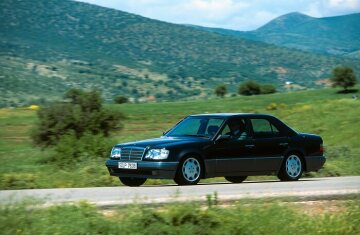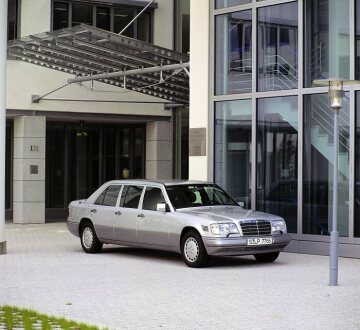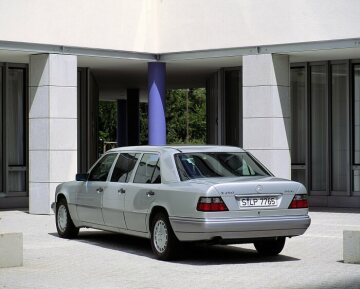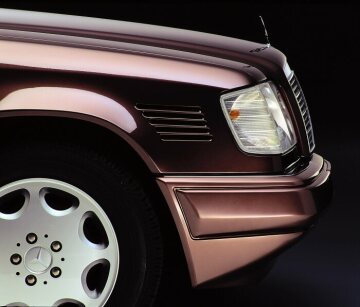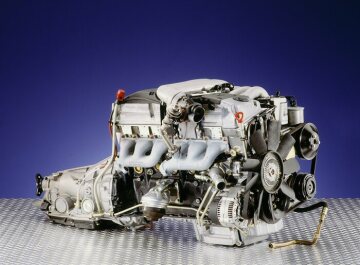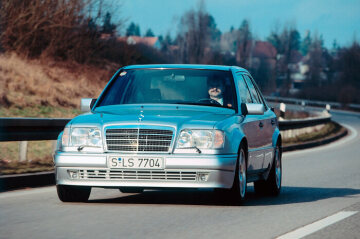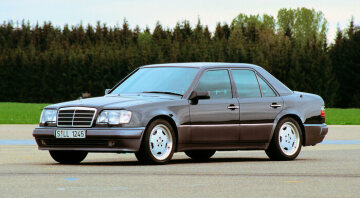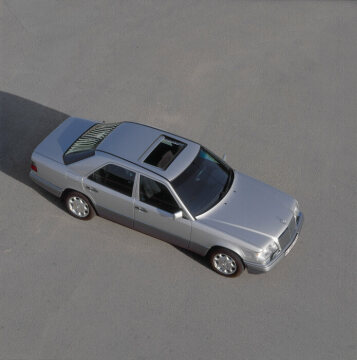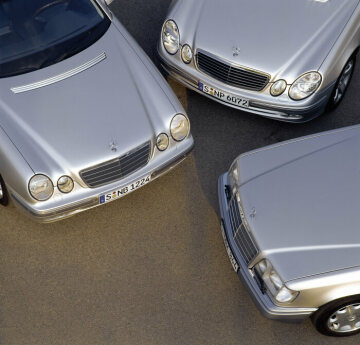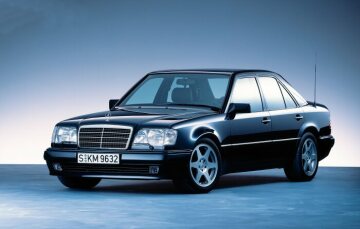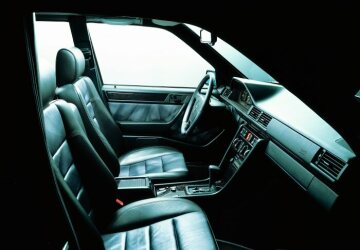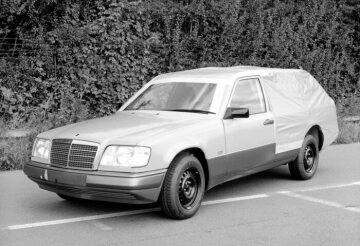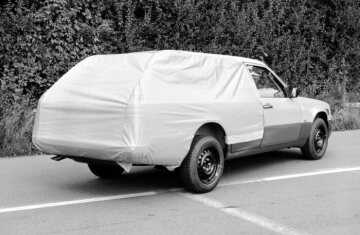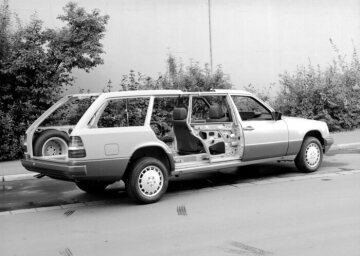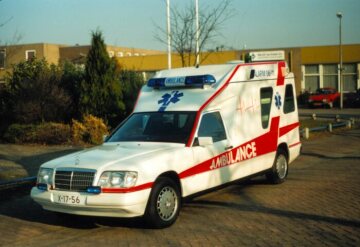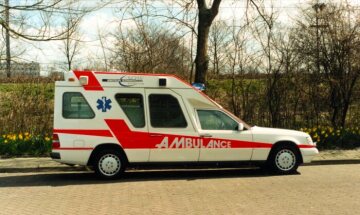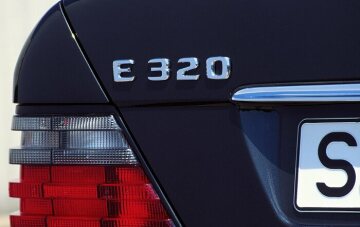Beginning in autumn 1992, the update for the 124 series was rolled out uniformly six months later. In a world first, the four-valve technology was now used for diesel models as well. The new technology guaranteed not just increased torque and performance across a significantly larger engine speed range, but also allowed for a reduction in fuel consumption of up to 8 percent at full throttle. Particulate exhaust emissions were also reduced (by around 30 percent) thanks to the optimised combustion cycle. Only the five- and six-cylinder naturally aspirated engine were converted to four-valve technology. The 2.0-litre four cylinder unit and both the turbocharged engines remained on two valves per cylinder. For the four-valve diesel models, fresh-air intake was provided via vents on the right front wing, as was already the case on the turbo diesel models. In order to improve environmental compatibility, from June 1993 onwards all diesel models in the 124 series were fitted with exhaust gas recirculation and oxidizing catalytic converter as standard.
But the facelift programme was not just for the diesel models. The 2.8-litre six-cylinder engine, unveiled six months previously, was given a detail modification that, for once, was not motivated by technical considerations. In order to get the models affected into a lower band for motor insurance within Germany, the rated output was reduced from 145 kW to 142 kW.
As part of the changes begun in June 1993, all models in the 124 series were brought stylistically up to date by redesigning their bodywork and were modified in line with the other model series. The most distinctive feature of the updated models was the radiator grill, which was based on that of the S-Class. For this 'integrated radiator', the chrome frame, which was relatively narrow in comparison to the previous version, was integrated harmoniously into the bonnet. The Mercedes three-pointed star was positioned on the bonnet, as it was on the S-Class saloons. Changes were also made to the light units. The front indicators were given transparent glass covers, while the tail lights had bichromatic covers, which for the indicators and reversing lights were a uniform white-grey. The orange of the front and rear indicators was produced by coloured bulbs. The boot lid was also given a makeover. The sharp edges on the upper surface were rounded off, and the forward-sloping surface between the tail lights now stood parallel to the rear end. A further change was the replacement of the continuous plastic handle strip with a chrome-plated handle on the upper endpiece of the number plate panel. Other changes were made to the wheels and bumpers. The steel disc wheels were given new hub caps with a six-hole design, and the bumper mouldings were now finished in the same colour as the mounted parts, while the rear bumper mouldings were extended to the wheel cutouts.
When the revised models went on sale in June 1993, the 124 series was also affected by the new nomenclature. In line with the S-Class and the new C-Class, the medium class was now called the E-Class, and the model designations followed a modified system. This involved a letter designating the vehicle's class preceding a three-digit number which, as before, was based on engine capacity. The E for Einspritzmotor (injection engine) was no longer needed, as carburettor engines were now a thing of the past. As for the body variant, that was quite obvious just from looking at the vehicle, so the C and T coding was also allowed to lapse. For the diesel models, the D that had been used up till then was replaced by the word Diesel or Turbodiesel after the figures. So under the new rules, the 300 D, for example, was designated as E 300 Diesel. The word DIESEL on the right of the boot lid could be removed at the customer's request, as could the entire model plate.
With the introduction of the new nomenclature, the 400 E was renamed E 420 to reflect its actual capacity. In addition to the model designation, two technical details had also changed. The standard equipment of the E 420 now included 16-inch alloy wheels with an eight-hole design and wide 215/55 ZR 16 tyres. And the front wheels brakes were replaced with the larger brakes found on the SL models.
In June 1995, two years after the last comprehensive remodelling programme, the E-Class saloons of the 210 series were unveiled as the successors to the 124 series. Production of the 'old' E-Class saloons ended shortly thereafter (between June and August 1995 depending on the model). The 4MATIC models and the E 500 had already been discontinued in March and April respectively. A special position was held by the E 250 Diesel and E 220 models, for which up until June 1996 CKD parts kits continued to be produced and sent to Pune in India for assembly. During the eleven-year manufacturing period, a total of 2,213,167 saloons, 2,342 extended wheelbase saloons and 6,398 chassis with part-bodies for special conversions were produced.








